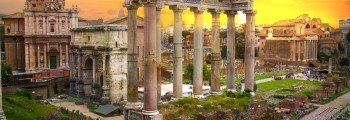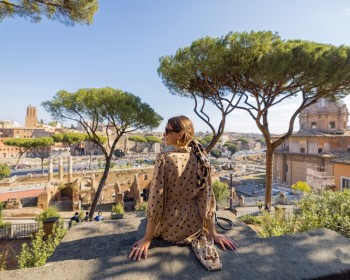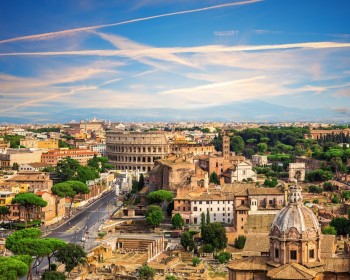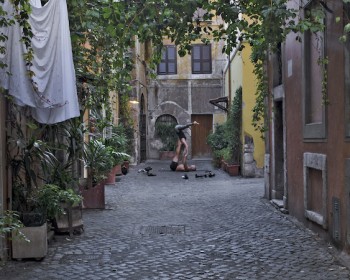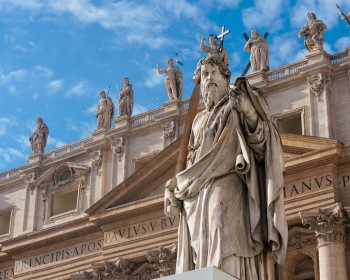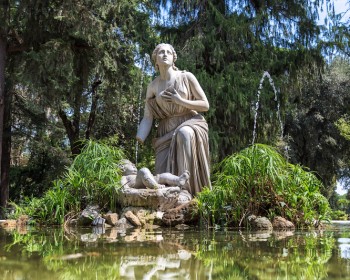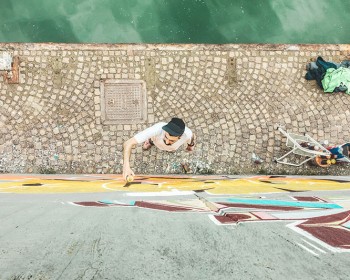According to an ancient legend, 124 is the number of steps you have to climb on your knees to win the lottery!
We are talking about the famous "scala santa" (holy staircase), the staircase that leads from Piazza Venezia to the church of Santa Maria in Aracoeli.
According to legend, the staircase must be climbed on your knees reciting the "de profundis" to receive a "miracle" from the Madonna. It was usually done by spinsters looking for a husband, women wanting to have children, mothers asking for milk to feed their children, all people seeking help from heaven.
The history of the church of Santa Maria in Aracoeli
However, moving on to the actual history of the church, it was built on the ruins of the Temple of Giunone Moneta, which stood on the Arx, one of the two heights of the Capitoline Hill.
The first construction dates back to the sixth century. As in many other cases, the church was surrounded by buildings that developed into a monastery on the upper part, while on the slopes of the hill a market and then a small neighborhood grew up.
Nearby, the mint of Rome was later built, called 'Moneta' because it was built next to the temple: hence the name 'moneta', which we still give to money. The mint, perhaps following the fire of 80 AD, was rebuilt on the slopes of the Caelian: its remains have been recognised under the present-day basilica of St Clement.
About the origin of S.Maria in Aracoeli little is known, but we have traces of it already in 880 with the name "S.Maria in Capitolio". The origin of the toponym "Aracoeli" (meaning "altar, of the sky") is all in the Latin word "arx", the spelling of the Latin "aracoeli" came later, probably by illustrious men of letters who believed that the origin of the place-name lay in the legend that narrated how the Emperor Augustus had built an altar to the sky after having had an apparition of the Virgin Mary with the Child in her arms and having heard a voice say "Ecce ara primogeniti Dei" (this is the altar of the first-born son of God").
In the Middle Ages, the church almost became the new forum of Rome, but during the French occupation and the Republic in 1797, the church was deconsecrated and used as a stable.
It was rehabilitated with the end of Napoleonic Rome, but after 1870 it found itself at the center of the demolition works for the construction of the Vittoriano and could barely be saved.
The church, however, is most famous for the 'Holy Child', who, according to tradition, was carved by a Franciscan monk from the olive wood of Gethsemane and baptized in the River Jordan. Since 1591, the legend has been arousing the enthusiasm of the people, because the Child is said to have miraculous powers, including that of raising the dead and healing the seriously ill. Unfortunately, the original statue was stolen in 1994 and the one we can see today is a copy, although nothing has changed for the faithful. At Christmas, the Holy Child is placed in the center of a picturesque nativity scene, but is usually in the sacristy, together with the panel of the "Holy Family". On the altar there is a bundle of letters sent to him from all over the world.
That's all you need to know about the history of the church, stuffed with a few interesting anecdotes, now you can go and visit it, even on your own or with a Private Tour!
It can be reached with a short walk from piazza di Spagna and via del corso so you can enjoy a bit of shopping in the Roman fashion district.


